Illusion of Face 3
since December 22, 2007



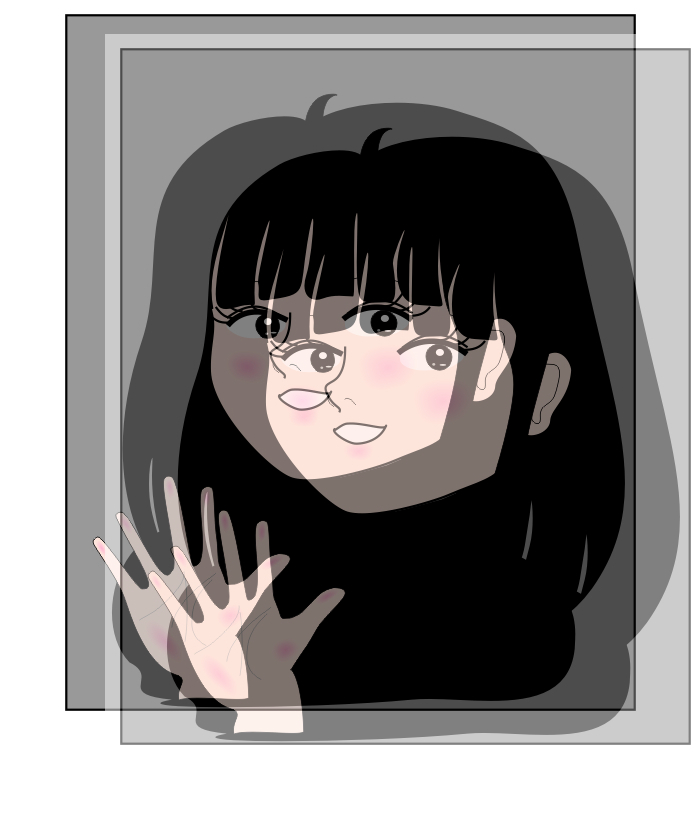


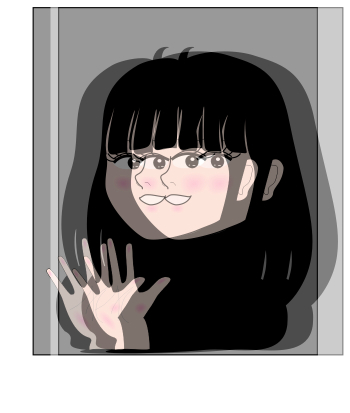

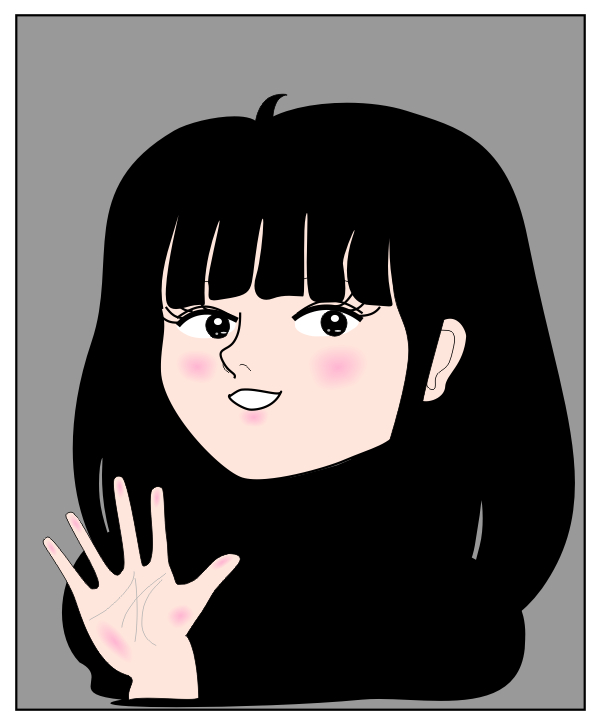 Original image
Original image
"'Knocked-face' illusion in a blurred image"
When an image of a face is blurred, its appearance is unstable as if the image were knocked or wobbly.
Copyright Akiyoshi Kitaoka 2008 (January 5)
 However, some of blurred images other than faces also
give this illusion, as shown below.
However, some of blurred images other than faces also
give this illusion, as shown below.
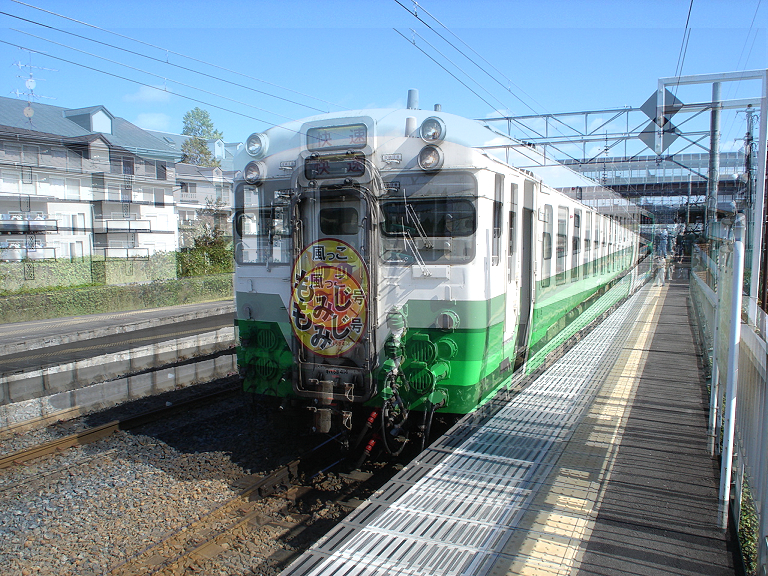
 Original image
Original image
 A body image without the face also yields this illusion, though the
magnitude is weaker than that in an image with the face.
A body image without the face also yields this illusion, though the
magnitude is weaker than that in an image with the face.


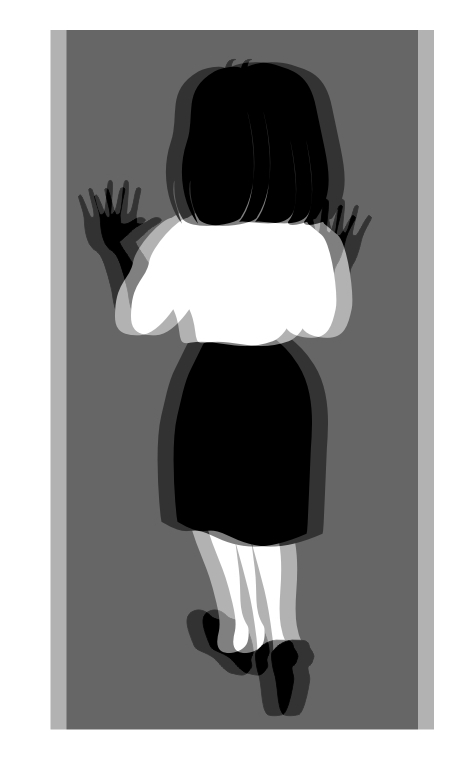

 Original image
Original image
 I hope this type of anomalous motion illusion induced by a
blurred image has already been known; I have been examining
the references. If you know, let me know please.
I hope this type of anomalous motion illusion induced by a
blurred image has already been known; I have been examining
the references. If you know, let me know please.

"'Knocked-face' illusion and 'Rotating snakes'"
Should the "knocked-face" illusion be observed when the "Rotating snakes" illusion stops, the former might be generated in the brain before eye movements occur.
Copyright Akiyoshi Kitaoka 2008 (January 5)
----------
One of my students reported that he had come across a web site that exhibits a number of pictures of the "knocked-face"
illusion as examples of "double vision". Double vision or diplopia is a disease that patients see a single thing double.
However, I believe that this illusion should not be called "double
vision" because visual illusion is not a disease. It would be OK if
this illusion was called "the illusion of double vision" for
example. This illusion is a new type of anomalous motion illusions such
as the Ouchi illusion and "Rotating snakes".
Anyway, I will keep searching who first discovered this illusion. If you
know, please let me know! <January 12, 2008>
 Ouchi illusion
Ouchi illusion
 Rotating snakes (part)
Rotating snakes (part)

"'Knocked-face' illusion and 'Fluttering hearts'"
The "knocked-face" illusion does not seem to be related to the illusion of "Fluttering hearts" (luminance-contrast-dependent visual-delay-inducing illusion).
Copyright Akiyoshi Kitaoka 2008 (January 5)
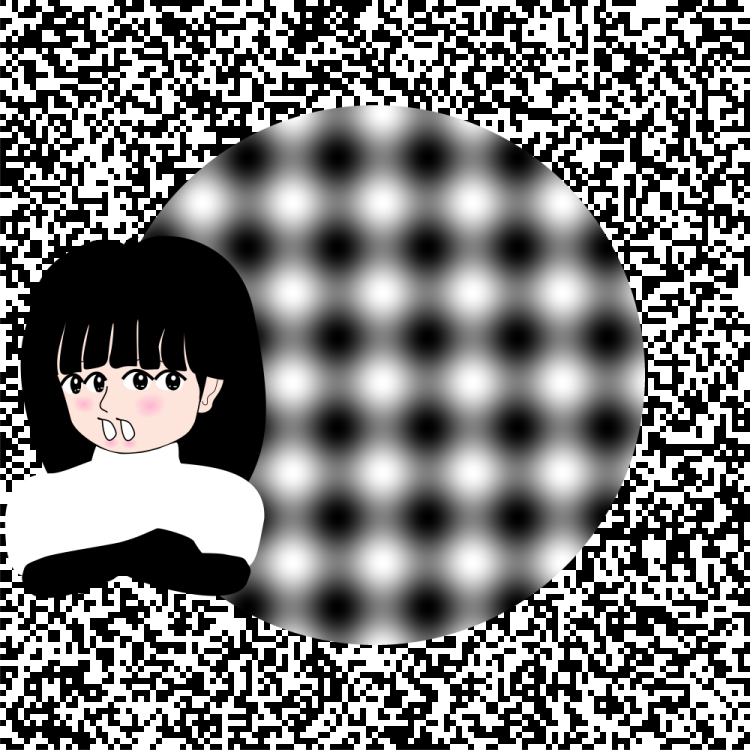
"'Knocked-face' illusion and 'Out of focus' #2"
If the horizontal component of the illusory motion in the circle is much stronger than the vertical one, the "knocked-face" illusion may be related to the illusion of "Out of focus".
Copyright Akiyoshi Kitaoka 2008 (January 5)
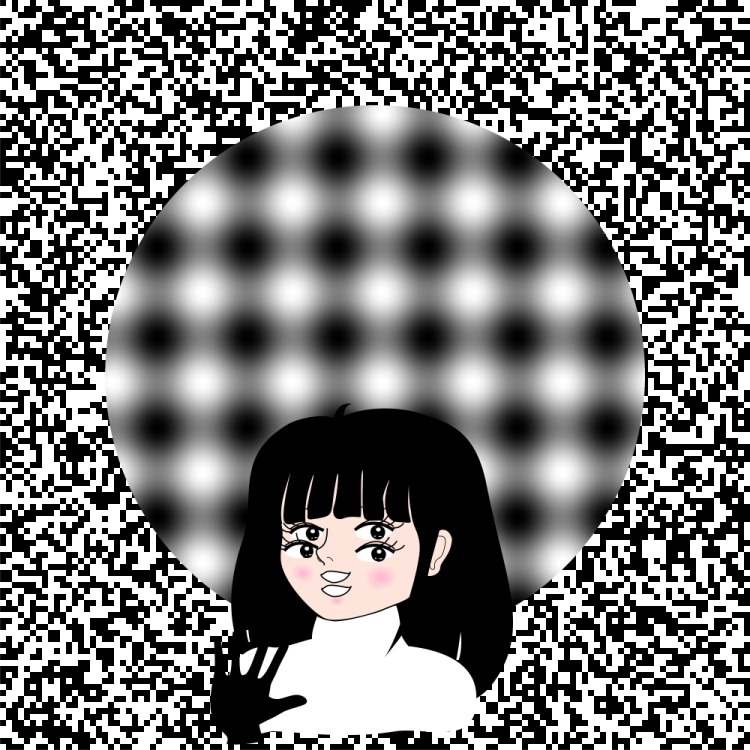
"'Knocked-face' illusion and 'Out of focus'"
If the vertical component of the illusory motion in the circle is much stronger than the horizontal one, the "knocked-face" illusion may be related to the illusion of "Out of focus".
Copyright Akiyoshi Kitaoka 2008 (January 5)
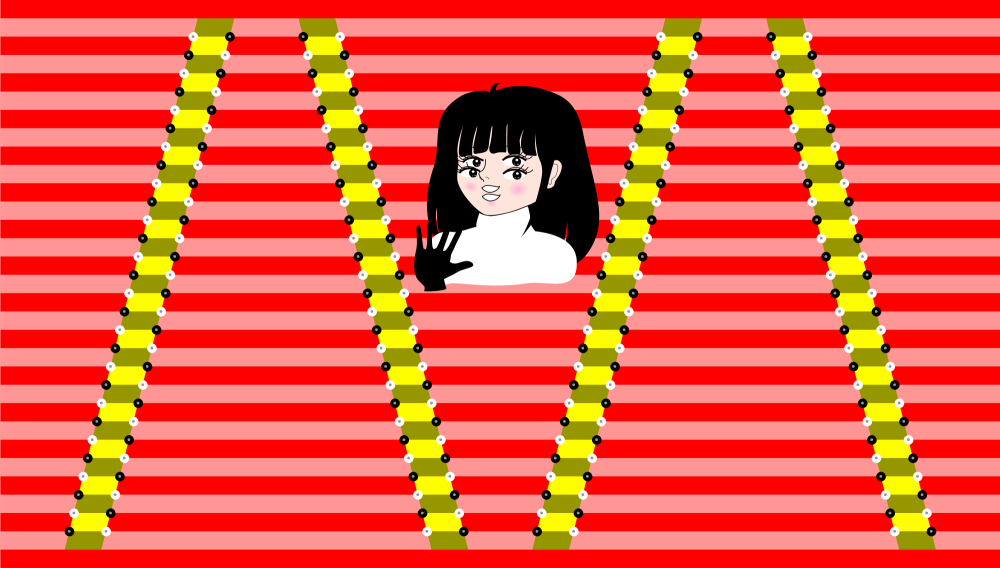
"'Knocked-face' illusion and 'Makudonarudo'"
It does not seem that the "knocked-face" illusion is strongly related to the illusion of "Makudonarudo". This suggests that the "knocked-face" illusion might not be related to slow components of miniature eye movements.
Copyright Akiyoshi Kitaoka 2008 (January 5)

"Effect of eye direction on the 'knocked-face' illusion"
(I feel) The "knocked-face" illusion is strongest when the eyes of a face is directed in the observer.
Copyright Akiyoshi Kitaoka 2008 (January 5)

"'Knocked-face' illusion and possible 'knocked-arm' or ''knocked-leg' illusion"
The face has four eyes and two mouths. Its appearance is unstable as if the image were knocked or wobbly. Here I tentatively call this illusion the "knocked-face" illusion, which is not what I have discovered. For those who know the correct name of this illusion or the references, please let me know. The counterparts of arms or legs may be possible but the effects seems to be rather weak.
Copyright Akiyoshi Kitaoka 2007 (December 29)

"Attenuation of the 'knocked-face' illusion in an inverted face 3"
The left face has four eyes and two mouths. Its appearance is unstable as if the image were knocked or wobbly. Here I tentatively call this illusion the "knocked-face" illusion, which is not what I have discovered. For those who know the correct name of this illusion or the references, please let me know. This illusion is attenuated by inversion of the face as shown in the right face. This finding suggests that this illusion strongly depends on face perception.
Copyright Akiyoshi Kitaoka 2008 (January 6, 2008)
For the Thatcher illusion, see the page of the illusion of face.

"Attenuation of the 'knocked-face' illusion in an inverted face 2"
The left face has four eyes and two mouths. Its appearance is unstable as if the image were knocked or wobbly. Here I tentatively call this illusion the "knocked-face" illusion, which is not what I have discovered. For those who know the correct name of this illusion or the references, please let me know. This illusion is attenuated by inversion of the face as shown in the right face. This finding suggests that this illusion strongly depends on face perception.
Copyright Akiyoshi Kitaoka 2007 (December 26; remaked January 5, 2008)
For the Thatcher illusion, see the page of the illusion of face.

"Longitudinal Wollaston illusion 3"
The left face appears to gaze at the observer while the right one appears to see downward, though the eyes are identical between them.
Copyright Akiyoshi Kitaoka 2007 (December 26)
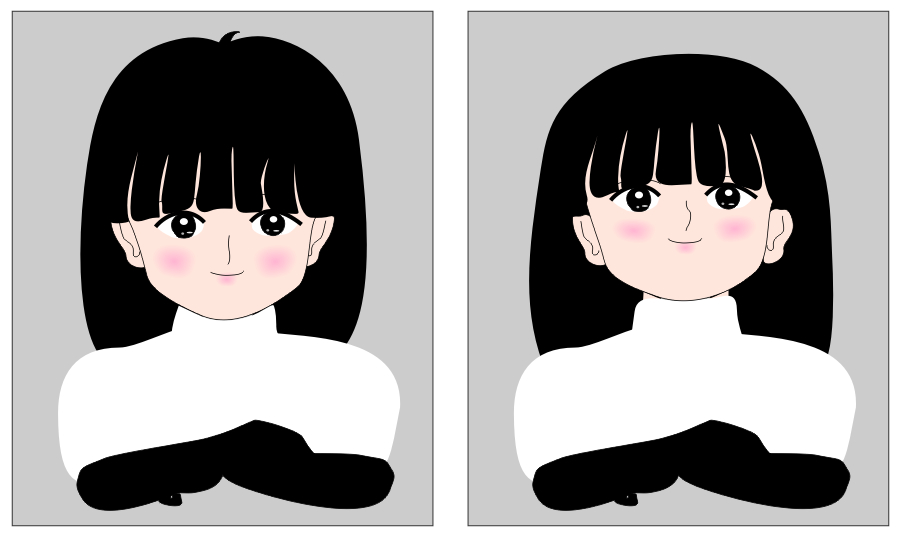
"Longitudinal Wollaston illusion (corrected)"
The left face appears to gaze at the observer while the right one appears to see upward, though the eyes are identical between them.
Copyright Akiyoshi Kitaoka 2007 (December 26)
The shape of eyelid does not seem to be responsible for this effect...

"Longitudinal Wollaston illusion 2"
The left face appears to gaze at the observer while the right one appears to see upward, though the eyes are identical between them.
Copyright Akiyoshi Kitaoka 2007 (December 26)
The shape of this eyelid seems to give a strong effect.

"Longitudinal Wollaston illusion"
The left face appears to gaze at the observer while the right one appears to see upward, though the eyes are identical between them.
Copyright Akiyoshi Kitaoka 2007 (December 22)